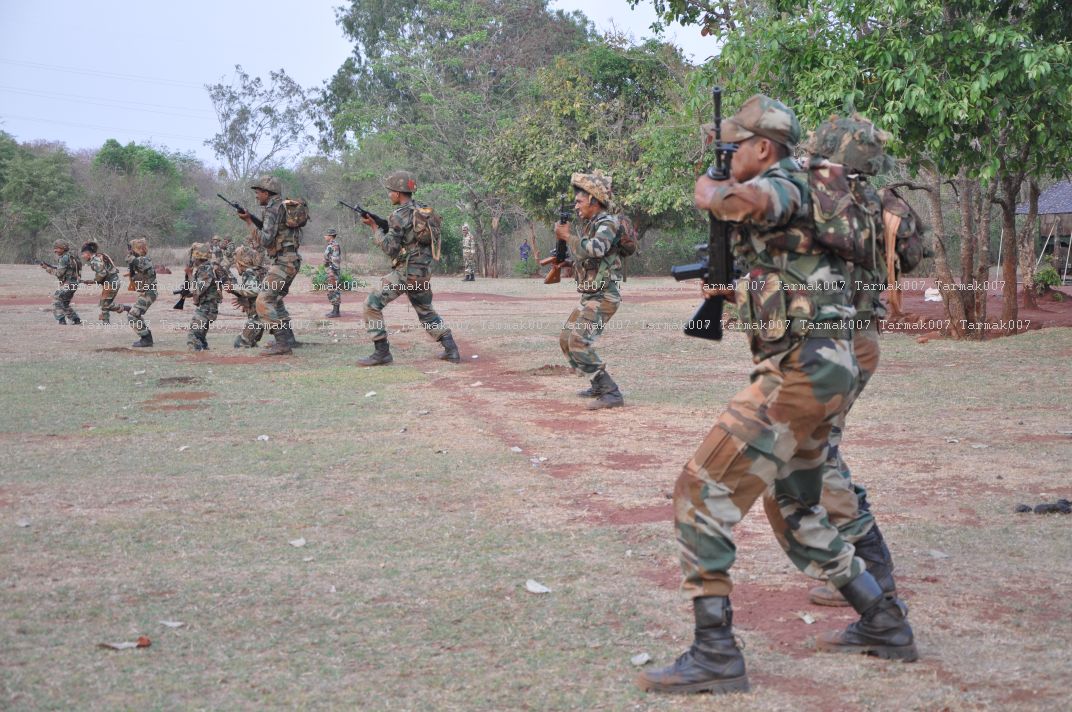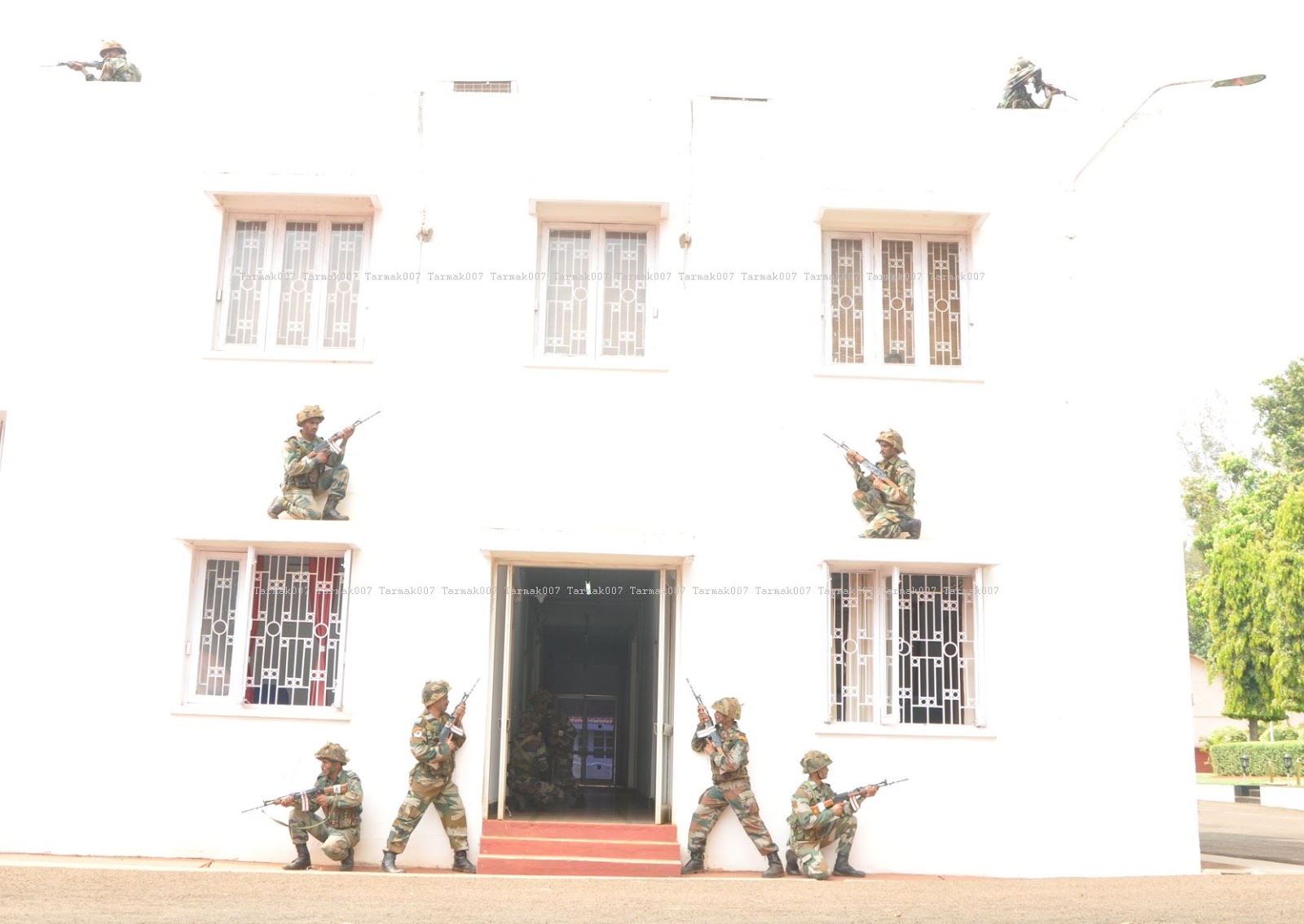- Joined
- Apr 5, 2009
- Messages
- 11,615
- Likes
- 5,775
Belgaum: The Indian Army's Maratha Light Infantry Regimental Centre (MLIRC) is putting its recruits through an innovative combination of aggression and firing skills as part of its mission to convert a civilian to a combat-ready solider. During a visit to its facilities here, this correspondent was given access to some of its new-age training modules which ran on a template designed for the fittest and the fearless.
With a motto of ek goli, ek dushman (one bullet, one enemy), the Army officials in charge of the 34-week rigorous training session told Express that the earlier a recruit gets accustomed to the basic skills of firing, half the battle is won. "Our training patterns have undergone changes over the years. Now a new recruit has access to simulators before he actually gets the feel of a live firing environment," says Col Tushar S Bhakay, Deputy Commandant, MLIRC.
The 1400-plus recruits who undergo training session every year are taught the HAT (holding, aiming and trigger operation) principle of firing. "The personal weapons on which the recruits get trained are specially designed to save ammunitions when fighting an elongated battle. Pin the enemy down with one bullet is the basic philosophy of firing as far as Indian Army goes," Col Tushar said.
The recruits extensively train on the 5.56 mm INSAS (Indian Small Arms System) rifles, with one magazine having a maximum capacity to hold 20 rounds.Adjacent to the short range is a designated area, where the recruits get initial lessons of aggression. It is here that he mixes his emotion and skills in the right proportion while charging towards the enemy.
A series of dummy targets are lined up to bear the brunt as screaming recruits come charging with their rifles fixed with the sharp bayonet ready to pierce through the enemy's heart."This is one of the most important skills that a recruit is put through during his basic training. We have observed that majority of recruits take some time to come back to normal emotion levels after undertaking the bayonet charge mission. In many ways, it is this aggression that makes or breaks a solider while facing the enemy in a hand-to-hand combat scenario," says Major Yogesh Dhumal, Training Company Commander.
Interestingly, the Maratha solider have a rich history of such aggressiveness displayed using rifle and bayonet during various battles. One such incident dates back to World War-II, where in Naik Yeshwant Ghadge, who was awarded with Victoria Cross posthumously after clearing an enemy machine gun, killed two of his enemies using the butt of the rifle. A statue of Naik Ghadge is displayed at the very entrance of the bayonet training area.





Tarmak007 -- A bold blog on Indian defence: Close Combat-1 | Aggression and firepower go hand in hand for Maratha Light Infantry soldiers
(To be continued)
With a motto of ek goli, ek dushman (one bullet, one enemy), the Army officials in charge of the 34-week rigorous training session told Express that the earlier a recruit gets accustomed to the basic skills of firing, half the battle is won. "Our training patterns have undergone changes over the years. Now a new recruit has access to simulators before he actually gets the feel of a live firing environment," says Col Tushar S Bhakay, Deputy Commandant, MLIRC.
The 1400-plus recruits who undergo training session every year are taught the HAT (holding, aiming and trigger operation) principle of firing. "The personal weapons on which the recruits get trained are specially designed to save ammunitions when fighting an elongated battle. Pin the enemy down with one bullet is the basic philosophy of firing as far as Indian Army goes," Col Tushar said.
The recruits extensively train on the 5.56 mm INSAS (Indian Small Arms System) rifles, with one magazine having a maximum capacity to hold 20 rounds.Adjacent to the short range is a designated area, where the recruits get initial lessons of aggression. It is here that he mixes his emotion and skills in the right proportion while charging towards the enemy.
A series of dummy targets are lined up to bear the brunt as screaming recruits come charging with their rifles fixed with the sharp bayonet ready to pierce through the enemy's heart."This is one of the most important skills that a recruit is put through during his basic training. We have observed that majority of recruits take some time to come back to normal emotion levels after undertaking the bayonet charge mission. In many ways, it is this aggression that makes or breaks a solider while facing the enemy in a hand-to-hand combat scenario," says Major Yogesh Dhumal, Training Company Commander.
Interestingly, the Maratha solider have a rich history of such aggressiveness displayed using rifle and bayonet during various battles. One such incident dates back to World War-II, where in Naik Yeshwant Ghadge, who was awarded with Victoria Cross posthumously after clearing an enemy machine gun, killed two of his enemies using the butt of the rifle. A statue of Naik Ghadge is displayed at the very entrance of the bayonet training area.





Tarmak007 -- A bold blog on Indian defence: Close Combat-1 | Aggression and firepower go hand in hand for Maratha Light Infantry soldiers
(To be continued)



























